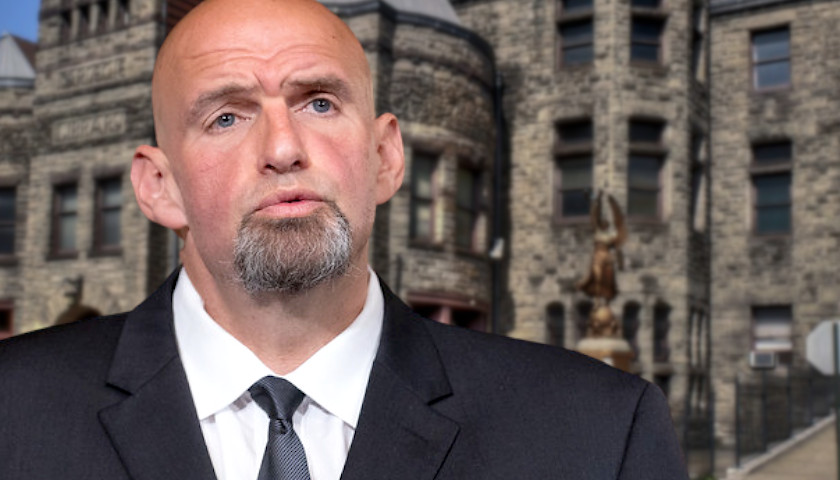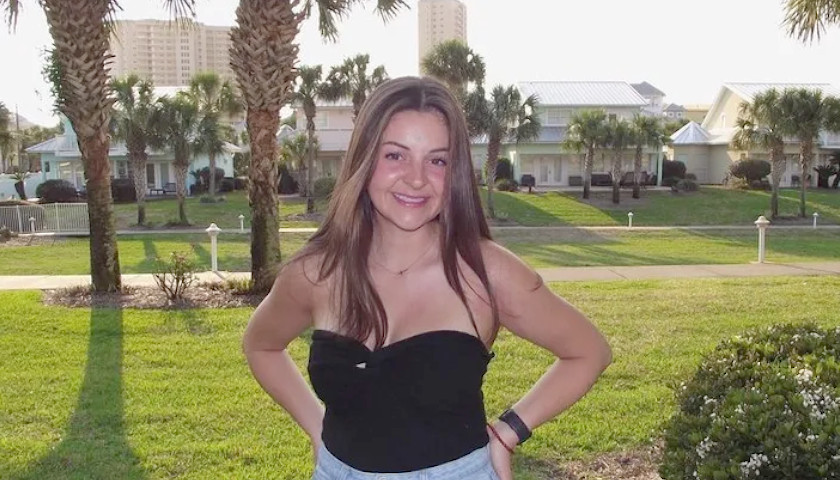by Jarrett James Lash
Aliquippa, Duquesne, Greenville, New Castle, and Rankin: western Pennsylvania has no shortage of economically distressed municipalities that seem to have been left by the wayside and forgotten. But the town of Braddock got something different: a political figure standing 6-foot-8, draped in gym shorts and a Carhartt hoodie. He promised to turn around a persistent economic depression, and he brought national media attention to the small town, which had seen a population decline from a peak of 20,000 in the 1920s to under 1,800.
John Fetterman moved to the small Allegheny County town of Braddock from York in 2001, as part of his service placement through AmeriCorps. Enamored with the town’s “malignant beauty” and the potential it held for the Harvard graduate’s political ambitions, he made Braddock his adopted home. Four years later, he became mayor, winning by the narrowest of margins – one vote. Since then, Fetterman, now Pennsylvania’s 34th lieutenant governor, has sought to revive the town’s declining fortunes. Now, as the Democratic nominee for Pennsylvania’s open U.S. Senate seat, Fetterman hopes to bring his curated blue-collar progressivism to Washington.
His performance in Braddock does not bode well for that project. Fetterman’s campaign touts his idealistic vision for Braddock, but his record falls far short of the promise. His despotic mayoral rule has left Braddock in a precarious place. Since he took office in 2006, the town’s population has continued to decline steadily, from 2,481 people in 2005 to 1,721 in the 2020 Census.
Though he was an elected official, Fetterman leveraged a system of direct investment into his town as an independent community-redevelopment czar. But he wasn’t using his own pocketbook or local tax revenue, instead relying on inconsistent grant funding to complete his development goals. And he didn’t look toward job creation as the driver of economic growth. He leveraged his nonprofit, Braddock Redux, to raise funds and complete community development initiatives so as to circumvent the need for borough-council funding approvals and create a wider net of funding avenues. From 2007 to the end of Fetterman’s mayoral administration, Braddock Redux raised over $6.6 million, according to IRS 990 filings.
One of the largest donations came when Braddock participated in a Levi’s Jeans campaign. The company had cast local residents to participate, and in return, the company invested $1 million into the town to create a community center and downtown playground. Other major initiatives of Braddock Redux include the Free Store and UnSmoke Systems Art Space. The Free Store, which functions as the name entails, pursues a mission to “change individual relationships with material goods while combating poverty through empowerment.” UnSmoke Systems Art Space, in Fetterman’s words, was created “to help change the outsider’s perspective of what’s possible in Braddock through the arts.”
The glory days of 501(c)(3) funding appear to be over for Braddock, however. After Fetterman’s election as lieutenant governor in 2019, the nonprofit brought in only $55,893 for fiscal year 2020, a 93.8% decline in revenue from the previous year. That left the group at negative $104,633 in net income for the year. As the pandemic squeezed families across the nation, it was the least opportune time for Braddock Redux to draw back from initiatives in the community. The nonprofit’s communication has dropped off along with its revenue. Its Facebook page, the main method of communication, hasn’t posted anything since December 2020.
“A lot of the projects didn’t have the sustainability insight built into them at all,” Braddock’s new mayor Chardae Jones told the Independent, referring to the work of Braddock Redux over the past 16 years. “A lot of them don’t exist anymore – except the Free Store.” Many projects were completed with pomp and circumstance, camera crews, and ribbon-cutting ceremonies, but Jones suggested that they were not always created with the consultation of the community.
Offering an example, Jones said that “we had a fine dining restaurant and . . . it’s a predominantly poor community, so a lot of people couldn’t eat there.” The restaurant, Superior Motors, opened with help from Fetterman and a Kickstarter campaign, only to close during the pandemic. Jones believes that the root cause of these missteps was Fetterman’s unwillingness to collaborate. She ultimately decided not to endorse Fetterman for his Senate bid and instead put her support behind Malcolm Kenyatta.
With Fetterman’s fundraising prowess and media dominance gone elsewhere, many grassroots, ambitious projects seem to have left Braddock as well, though Fetterman has leveraged his newfound political clout in Harrisburg. In 2022, Fetterman’s boss, Gov. Tom Wolf, announced a $1.75 million investment into the Braddock Carnegie Library. Ironically, a once-altruistic creation of Andrew Carnegie now needs tax dollars to stay afloat. Once Fetterman leaves his job as lieutenant governor, it’s worth asking whether state funding to Braddock will drop off – just as Braddock Redux’s financial support of the community did three years ago.
Meantime, one hour north of Fetterman’s adopted hometown, the town of Foxburg offers a contrasting story of private philanthropic leadership – and contrasting results. In a story similar to that of the popular sitcom, Schitt’s Creek, Dr. Arthur Steffee relocated to Foxburg in 1998, having grown up in nearby Oil City. Foxburg had come into its own economically alongside much of the region through the oil boom of the late 1800s. As the oil industry began to wane in Pennsylvania, Foxburg declined, its population dropping to 200 people. By the time Steffee returned to the region following his retirement from a successful career in orthopedic surgery in Cleveland, he described his new home as “just a big mud hole,” citing the multiple derelict properties along the waterfront. But Steffee also saw magnificent views of the Allegheny River.
Harnessing the potential for tourism, Steffee began his passion project of becoming a one-man private redevelopment agency for Foxburg. The vision was clear from the start: to capitalize on Foxburg’s unrivaled beauty. By leveraging Steffee’s private investment into tourism-producing assets, the town could become a beacon for weekend travelers leaving Pittsburgh and Cleveland for a change of scenery. Some of the town amenities created from Steffee’s vision include a European-style chocolatier, an intimate concert venue, local art galleries, a pizza and country store, a winery, Segway and boat tours, bike rentals, and a riverside inn.
Steffee spent an estimated $6 million rebuilding the downtown – an amount comparable to what Braddock Redux pumped into Braddock. Ever since the investment began, local residents’ response has remained positive. Foxburg mayor Chuck Gisselbrecht attributes the town’s resurgence to Steffee’s work.
The same cannot be said of John Fetterman’s redevelopment work in Braddock. No one disputes that Fetterman brought unprecedented investment into the community. But the nonprofit-based investment method he applied did not sustain itself after he left for Harrisburg. As Jones puts it, “When you grew up poor, you don’t know you’re poor. When you’re a kid, you just know you’re having fun, but I think people would rather not have these things like the programming and all these awesome things with no sustainability in sight, then get them, and then they’re gone.”
Back in Foxburg, Steffee is leaving his post as town philanthropist, citing his age (86) and the recent death of his wife. Before he leaves, though, he is ensuring that the torch gets passed to the next generation. In August, the Wall Street Journal reported that a Cleveland couple, Saji Daniel and Shannon McGauley, purchased Steffee’s entire Foxburg investment portfolio. The portfolio includes all business holdings, over 50 residential lots, and Steffee’s personal gem, a large estate crowned with a Gilded Age mansion that he and his wife had meticulously restored. Since the acquisition, Daniel and McGauley have invested over $500,000 in Foxburg, with plans for an additional $3 million in the next few years. It’s clear that Steffee passed the baton to Daniel and McGauley to continue the legacy of investment. With a consolidated investment strategy backed by generous financial support, Foxburg will likely continue its positive development.
“A society grows great when old men plant trees in whose shade they shall never sit,” a Greek proverb states. Braddock will see no more Rolling Stone photoshoots or primetime nightly news coverage. The soul of the town may feel slightly restored, but the local economy is no better off than in 2005. Fetterman employed misguided investing strategies that made headlines, improving his own career opportunities while leaving Braddock’s economy stagnant. His tactic of using political favors in Harrisburg for Braddock’s benefit extends only as far as the remainder of his time as lieutenant governor.
“Braddock is a roadmap to begin to build it [Pennsylvania] back up,” Fetterman declared at the end of his announcement video for his first Senate campaign, in 2016. Six years later, those words don’t stand up. If they were true, then turbulent philanthropic fundraising, circumvention of community input and borough council approval, and large, politically motivated investments would be the best ways for small Pennsylvanian towns forgotten by Harrisburg to revive themselves. Braddock’s experience suggests otherwise.
Not every town can find a deep-pocketed philanthropist to help revive its local economy. But if others wish to follow that example, they should avoid the quick-fix strategy of John Fetterman in Braddock and follow the sustainable approach of Arthur Steffee in Foxburg.
– – –
Jarrett James Lash, a recent New York University graduate, focuses his writing on East Coast housing issues.
Photo “John Fetterman” by Tom Wolf. CC BY 2.0. Background Photo “Braddock Carnegie Library” by Christopher Rolinson. CC BY 3.0.








